Agile Scrum Note 07
Information about Scrum planning
Principles behind Agile planning
- Planning in Agile is considered as a "Speculative" activity, i.e., you make a forecast that is reasonable, based on the available information
- The plan is elaborated and becomes more and more definitive over a period of time
- Normally on Agile projects, you plan based on "time-boxes", i.e., fix the time and resources available and determine the features that can be delivered
- The plan has to be flexible and planning is an on-going activity
- Try not to pack too much into the plan - allow space to accommodate changes
Iterations allow for mid-course corrections
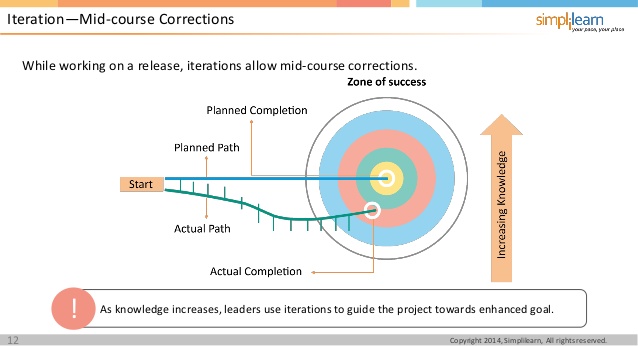
Multiple levels of planning
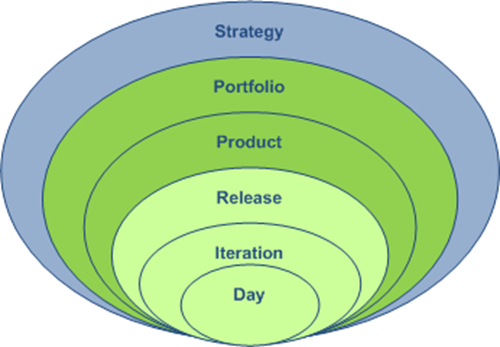
- Iteration planning considers the tasks that are needed to transform a Feature Request into working, tested software
- Iteration Planning occurs at the start of each iteration
- Product Planning involves a product owner looking ahead than the immediate release and planning for the evolution of released system
- Portfolio planning involves the selection of the products that will best implement a vision established through an organization's strategic planning
Release planning
A Release Plan presents a roadmap of how the team intends to achieve the product vision within the project objectives and constraints identified up-front
- It helps the product owner and the whole team decide how much must be developed and how long that will take before they have a releasable product
- A release conveys expectations about what is likely to be developed and in what timeframe
- A release plan serves as a guidepost toward which the project team can progress
Steps to planning a release

The team and product owner collaboratively explore the product owner's conditions of satisfaction that include scope, schedule, budget, and quality.
Release Planning
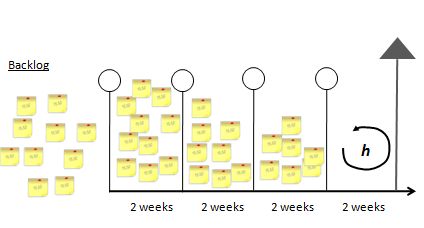
The purpose of Release Planning is to define the contents of a release or a specific shippable product increment.
Velocity
- Velocity is a measure of a team's rate of progress per Sprint
- It is calculated by summing the number of story points assigned to each user story that the team completed during the Sprint.
Sprint planning
- The Goal of Sprint planning is for the team to make a "good commitment" about what they will deliver at the end of the Sprint
- A "good commitment" means:
- Everybody is clear about the goals
- Everybody agrees that it is "achievable"
- It should be achievable without sacrificing:
- Sustainable pace
- Quality (near releasable quality)
- A Sprint pre-planning meeting and preparations would help
Velocity driven sprint planning
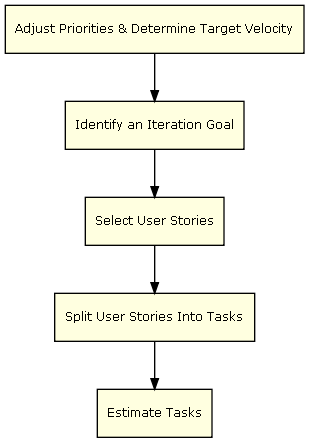
Commitment driven sprint planning
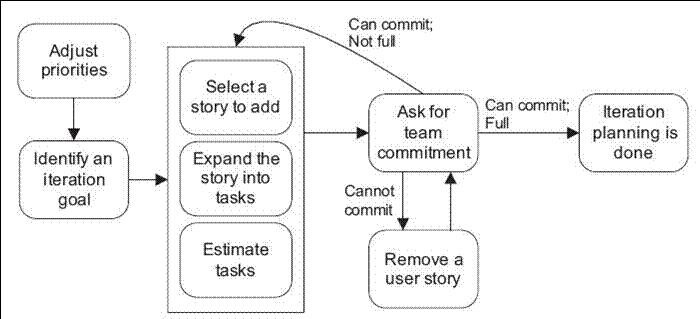
In Commitment driven sprint planning, the team is asked to add stories to the sprint one-by-one until they can commit to completing no more.
Find out how much time is available
Allow time for:
- Hacking, reading blogs, 20% time?
- Lunch, tea breaks
- Meetings
- Fixing P1 bugs from previous version
- Time committed to other teams
Planning for each story
- Find out what "tasks" are needed
- Design / Design review
- Code
- Unit test
- System and regression test
- Documentation
- Bug fixing
- Assign tasks to resources and re-estimate the tasks
- Make sure the team member has time available
Keep in mind before finalizing the plan
- Does everybody in the team have enough (not too little and not too much) work to do?
- Have you considered correct capacity (e.g. account for planned leaves)?
- Do you have some buffer to accommodate unplanned absence or other contingencies?
- Have you kept time aside for Scrum rituals: Planning, Stand-ups, Review, Retrospective?
- Do you understand the dependencies and have they been tied up?